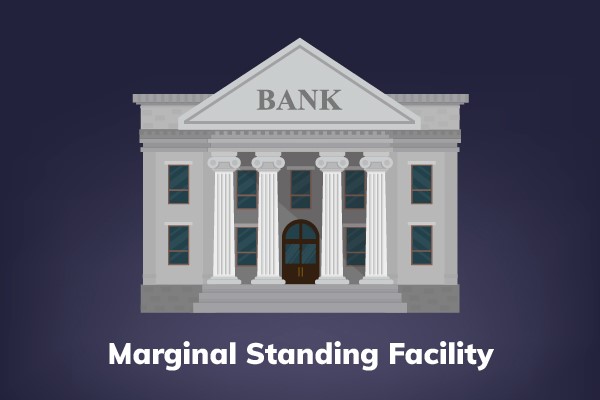Current MSF Rate: What It Means for Borrowers

When interbank liquidity completely dries up, banks, NBFCs and scheduled commercial lenders can borrow money for the short term from the central bank of the country by offering a percentage of the government-approved securities they own as collateral under the Marginal Standing Facility.
The question is why do banks and other financial institutions face liquidity issues? It is very common for banks and other financial institutions to experience liquidity issues due to a mismatch between the deposits and the loan profile of the lending institution.
In this case, the Reserve Bank of India not lending money to the borrowing bank can lead to interruptions to the working of the banks within the country.
To enable the smooth working of the Indian banks, maintain the integrity of the Indian banking system and ensure sustained economic growth within the country, the RBI came up with the concept of Marginal Standing Facility.
The Marginal Standing Facility allows borrowing banks and NBFCs to borrow money from the central bank of the country, i.e. RBI, for a short term to handle a liquidity issue. The money is lent for a day and scheduled banks and lenders can borrow money from the Reserve Bank of India under this Facility on all days except Saturdays.
Further, loan applications must be made in the multiples of Rs.1 Crore. The Reserve Bank of India decides the MSF rate after studying the external market conditions. The current MSF Rate is 18%. However, the RBI can increase it to as high as 40%.
The Reserve Bank of India introduced the Marginal Standing Facility in 2011-12. The facility was implemented in June 2011 and within the first year of its initiation, different banks and other financial institutions borrowed Rs.1 Billion under the Marginal Standing Facility.
So, how does the Marginal Standing Facility work and how does it impact home loans and other loans? When a bank borrows money from the Reserve Bank of India, they have to pay interest in the form of the current MSF Rate.
The understanding is that the borrowing bank will buy back the pledged securities before the end of the next day. Not doing so would lead to the bank being slapped with a penalty. The borrowing bank has to pay interest on the money bought under the Marginal Standing Facility at the current MSF Rate.
Thus, borrowing money under MSF has a direct impact on financial institutions’ profit margins. When financial institutions have to pay high interest on loans, they also increase the interest rate they charge their clients on their borrowings.
Thus, when the Reserve Bank of India increases the MSF Rate, banks, NBFCs and other financial institutions also increase the rate of interest they charge on loans, thereby making all loans including home loans more expensive. On the other hand, an MSF rate cut by the central bank of the country causes loans to become cheaper.
Since we are talking about the Marginal Standing Facility and the MSF rate, we must also talk about other rates and external benchmarks that affect home loan interest rates. For instance, the Repo Rate is the rate at which the Reserve Bank of India lends money to banks in exchange for government-approved securities.
A Repo Rate hike causes home loans as well as other loans to become expensive. On the other hand, a repo rate cut causes loans to become cheaper. Home loan borrowers must also know about the Statutory Liquidity Ratio.
Statutory liquidity ratio refers to the percentage of one’s total time and demand deposits that banks and other financial institutions must set aside before they start lending money to borrowers. Not maintaining SLR threatens the working of the Indian banking system and can lead to heavy penalties.
When the RBI increases the SLR, loans become expensive. On the other hand, when the RBI decreases the SLR, all loans, including home loans become cheaper.
It is important to understand these different benchmark rates and track changes in them throughout your loan tenor, especially if you are on floating interest rates. Doing so will allow you to ensure that you are being passed the benefits of rate cuts and can save money.









